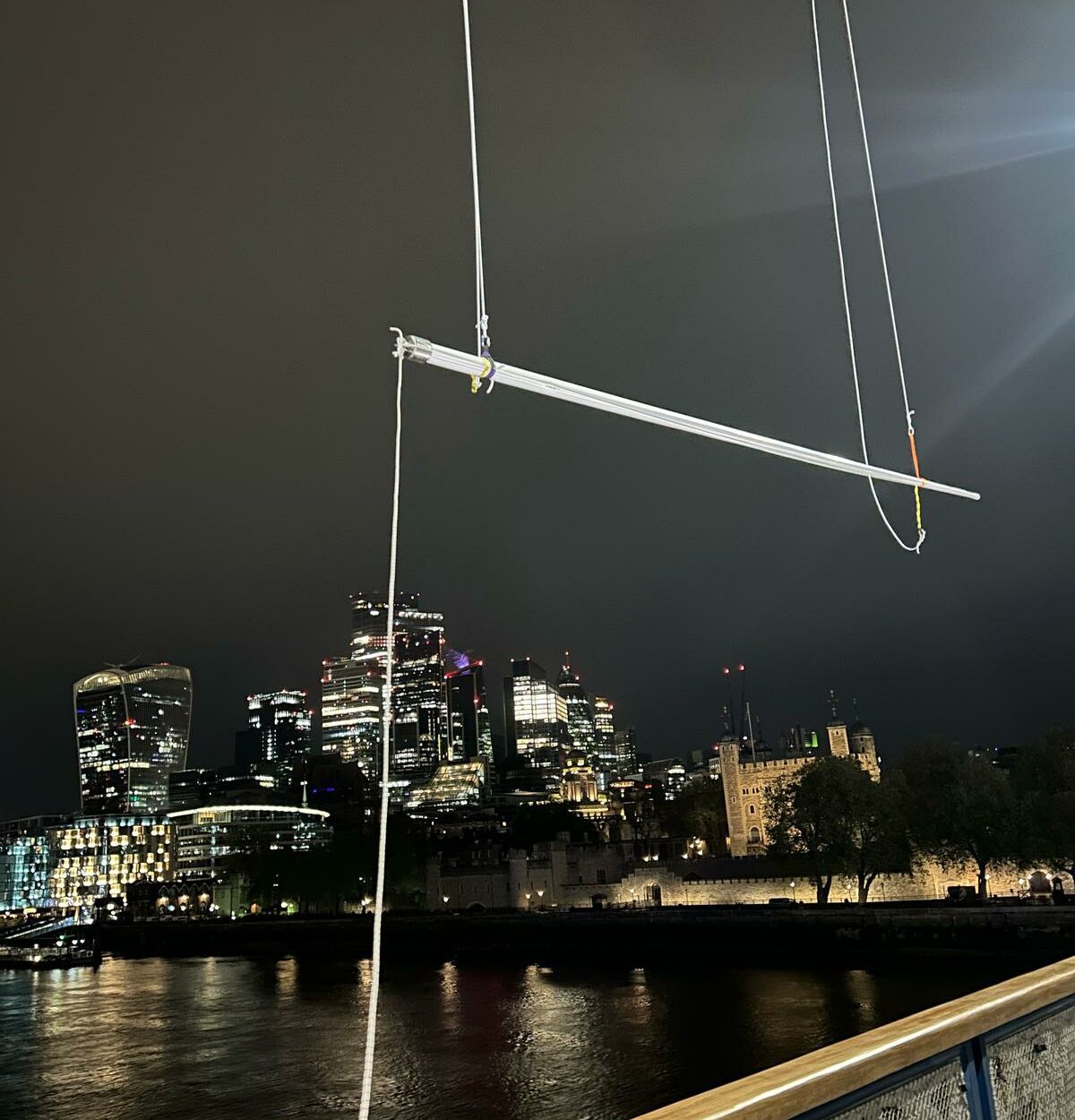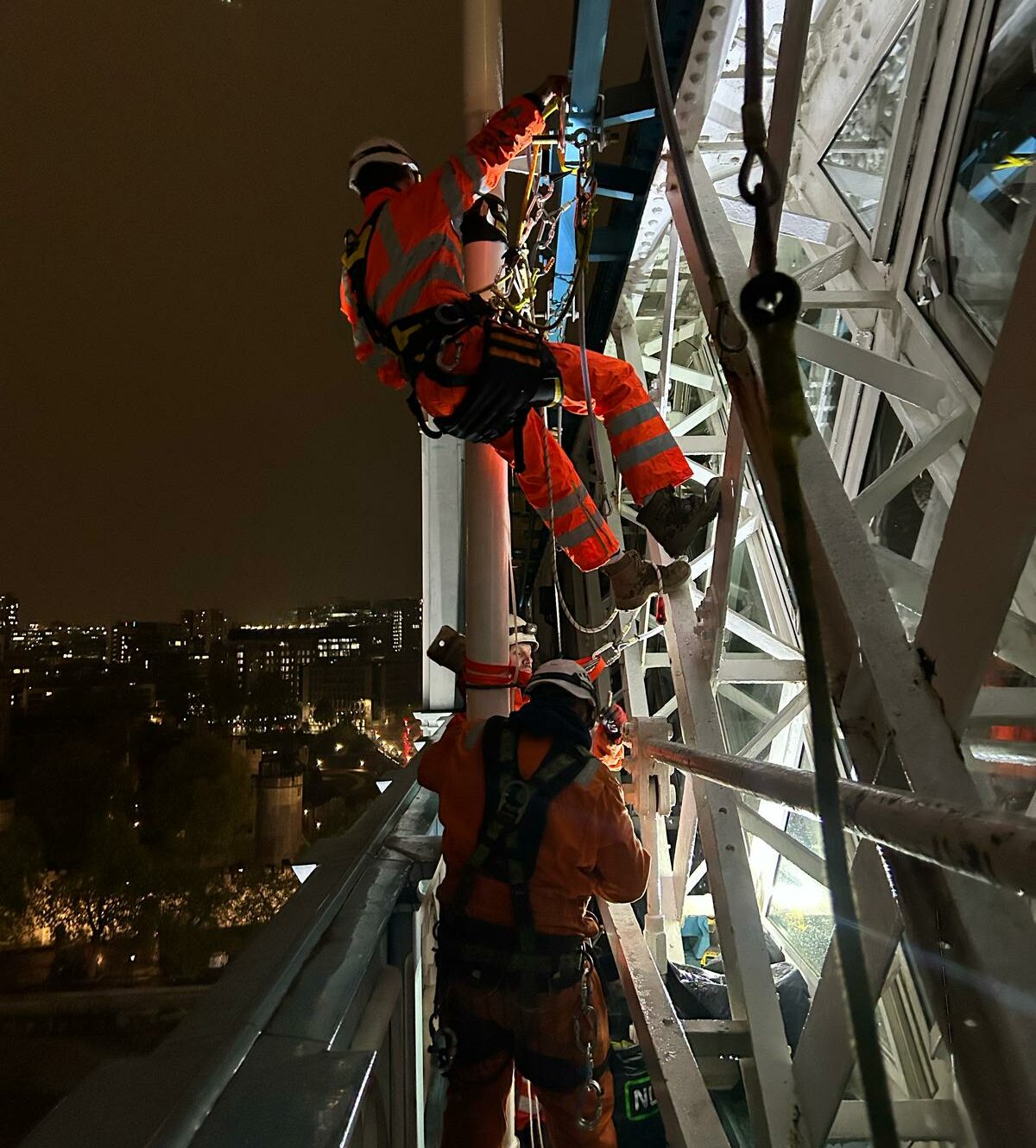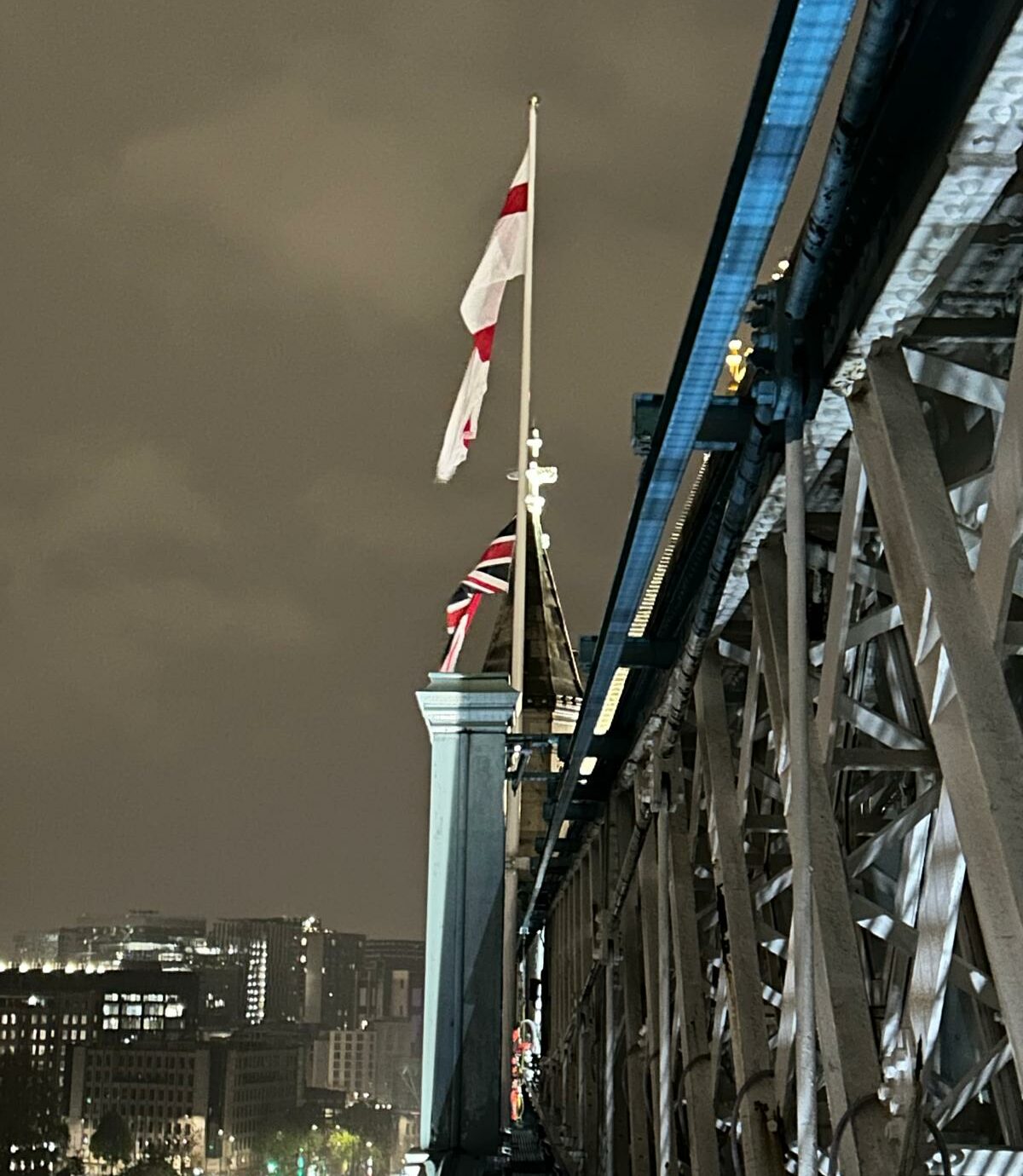

X
This site uses cookies. By continuing to use this site you agree to our use of cookies. To find out more, see our Privacy Policy and Cookie Policy.
Completed in 1894 after eight years of construction, Tower Bridge was designed to ease road traffic while allowing ships to pass beneath the River Thames. Its innovative combination of a bascule mechanism and suspension spans, framed within striking Victorian Gothic towers, made it both highly functional and instantly iconic. Located beside the Tower of London, it has since become one of London’s most recognized landmarks and is now protected as a Grade I listed structure.


The installation of a new flagpole on Tower Bridge presented significant technical, logistical, and regulatory difficulties. As a listed building, every aspect of the project required heritage approval to ensure the preservation of the bridge’s historic character. Structurally, the hybrid design of suspension spans and lifting bascules restricted where additional loads could be introduced, since the wind force acting on a flag had the potential to interfere with the bridge’s balance and hydraulic operation. Access posed further complications, as the bridge sits directly over the River Thames and operates on a busy schedule of lifts for river traffic. The project also had to avoid any risk of damaging or altering original materials, meaning all interventions needed to be fully reversible. These challenges were overcome through a combination of careful engineering, heritage collaboration, and precise planning.
The project team worked closely with conservation authorities to obtain approval and ensure that all work respected the integrity of the structure. Structural engineers carried out detailed assessments of load distribution to confirm that the flagpoles could be introduced without compromising stability. To preserve the historic fabric, the installation made use of existing brackets rather than new fixings, thereby avoiding any invasive work. The operation was scheduled at night, which minimized disruption to both road users and river vessels and provided a safer environment for the installation team to complete the work efficiently.
The installation was successfully completed in a manner that was safe, non-intrusive, and fully aligned with both structural and heritage requirements. By integrating technical analysis with sensitive conservation practices, the project delivered a practical solution while safeguarding the architectural and historical significance of one of London’s most treasured landmarks.

If you would like to find out more about the products discussed in this case study, please do not hesitate to speak to one of our specialist advisers.
Call 01325 390 195 or email sales@weareharrisons.com
If you’d prefer us to contact you leave your details in the form opposite and we’ll get back to you as soon as we can.